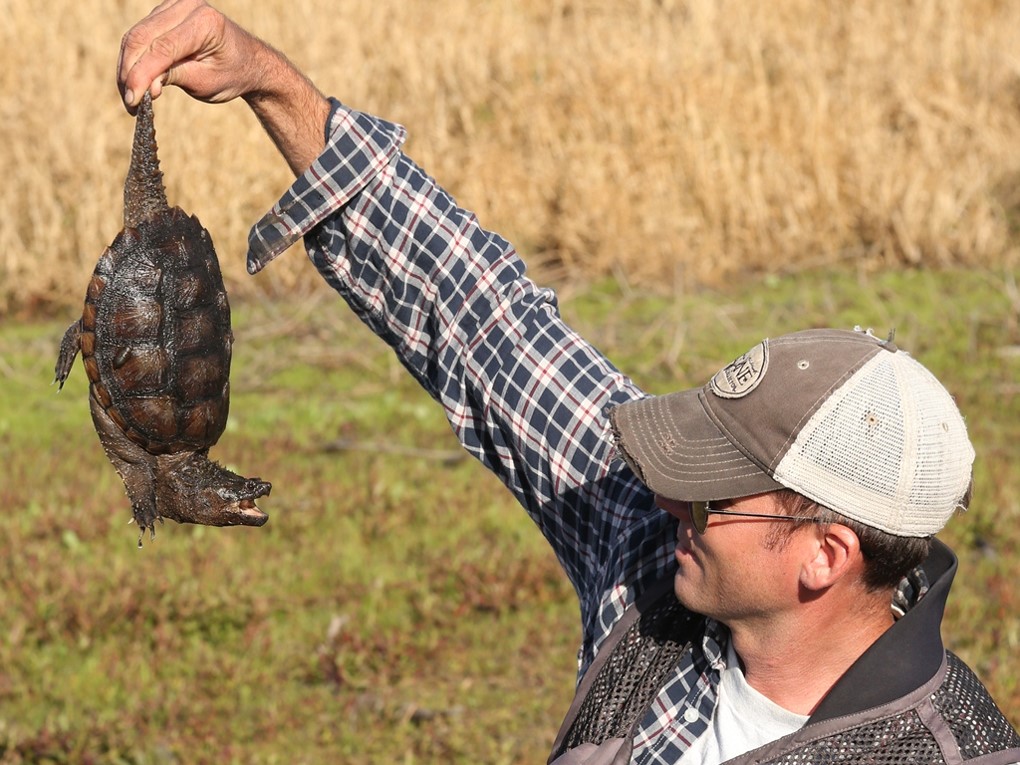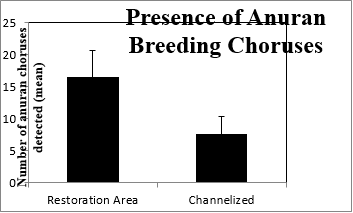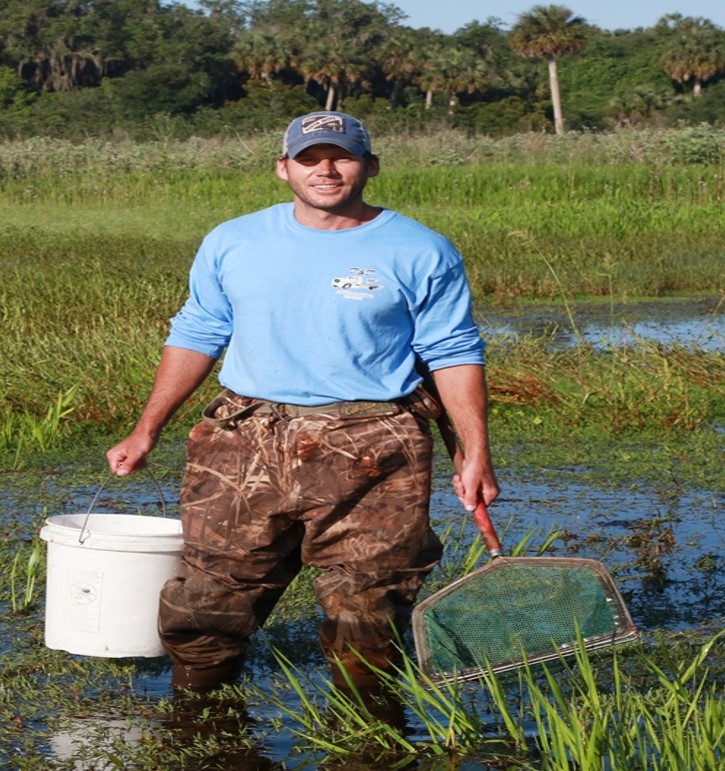Brent Anderson, SFWMD’s Environmental Scientist is the lead scientist on the Herpetological Research Studies conducted as part of the restoration of the Kissimmee River. The SFWMD has set up a series of Performance Expectations that guide the scientists in their research objectives. So far, the Kissimmee River Restoration is meeting the SFWMD’s research expectations which helps justify the investment in the Restoration project. Two of the 25 restoration expectations are based on the recovery of reptile and amphibian communities in the restored Kissimmee River. Brent conducts these research and monitoring studies:
Herpetofaunal drift fence surveys
Brent’s favorite study is the Herpetofaunal drift fence study that is conducted monthly. He describes the methods used, “We set up a long piece of aluminum flashing which acts as a barrier fence between the river’s floodplain and the oak hammock uplands. Pitfall traps and wire mesh funnel traps are placed along the length of the fence on both the upland and the floodplain sides. Traps are left open for a 4-day survey period and are checked every morning.”
Brent feels that this project is significant because “it not only shows the importance of the restoration for Herpetofaunal populations within the river floodplain, but also their interactions and dependency on the surrounding upland oak hammocks adjacent to the floodplain.”
Anuran call surveys
Brent has a keen interest and expertise with frogs and is able to mimic many calls of species found in the Kissimmee River ecosystem. Brent leads the Anuran call surveys that were conducted at night at random sites in the restored and channelized river (primarily cattle pastures). Brent documented the presence and absence of chorusing/breeding frogs, particularly species that are indicators of restoration success.

Brent explains his data results, “This graph illustrates that the restored river floodplain has significantly attracted and more than doubled the population of anuran breeding colonies.”
Brent expresses that “The most rewarding part of my career with the SFWMD is conducting ground breaking research. A river restoration project of this scale has never been attempted before. We get to experience first-hand, the remarkable ability of a degraded, broken ecosystem to recover and rebound!”
 Brent Anderson, SFWMD’s Environmental Scientist is the lead scientist on the Herpetological Research Studies conducted as part of the restoration of the Kissimmee River. Brent has been with the SFWMD for 10 years, and serves as the staff photographer to document the progress and success of the restoration project. He is an extremely talented photographer and provides most of the fabulous wildlife and landscape photographs that we use on the Riverwoods website!
Brent Anderson, SFWMD’s Environmental Scientist is the lead scientist on the Herpetological Research Studies conducted as part of the restoration of the Kissimmee River. Brent has been with the SFWMD for 10 years, and serves as the staff photographer to document the progress and success of the restoration project. He is an extremely talented photographer and provides most of the fabulous wildlife and landscape photographs that we use on the Riverwoods website!
Brent earned his undergraduate degree from Mercyhurst College in Erie, Pennsylvania where he majored in Environmental Science and Biology, and minored in photography. Brent then went on to pursue a Master’s degree at Florida Atlantic University, earning a M.S. in Biology. He began his environmental career as a field technician contracting with the SFWMD while completing his Master’s thesis. Soon after completing his M.S., Brent was hired as a full-time Environmental Scientist by the SFWMD.
Brent’s favorite study is the Herpetofaunal drift fence study. He says that “I enjoy this project because I get a chance to capture and observe many unique reptiles and amphibians that are very cryptic, nocturnal, or rare and would otherwise be undetected through traditional survey methods.”
When asked his advice to students interested in pursuing a career in environmental science, Brent replied “I encourage undergraduate students to consider continuing their education in a Master’s Program. Designing my own research project and working with some of the most highly respected scientists in the region really expanded my horizons, provided me with the confidence, knowledge and the opportunities to transform my career dreams into reality.”